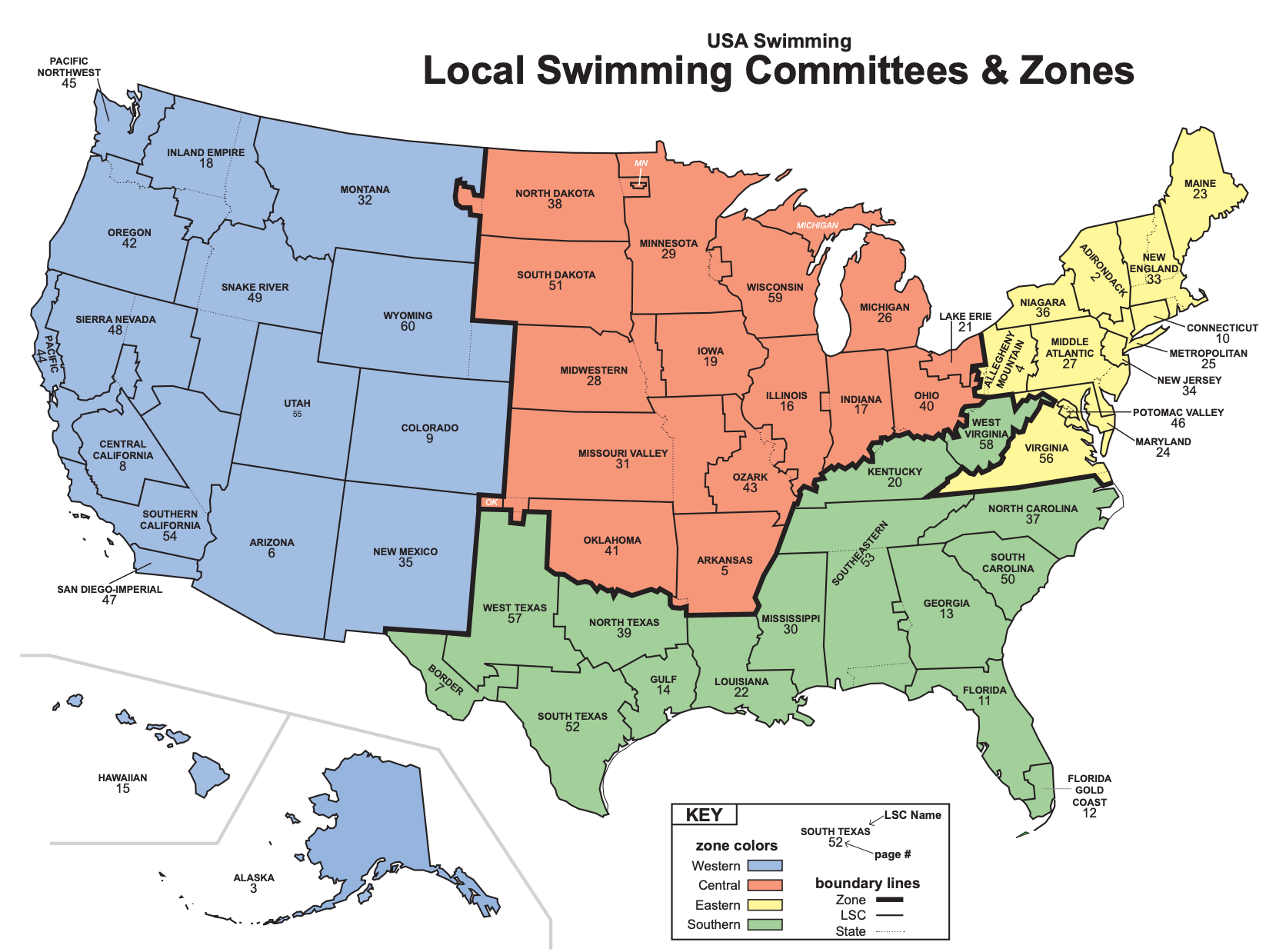🏊 USA Swimming Power Points Explained
-
USA Swimming assigns a Power Point value to eligible swims recorded in its national database for Short Course Yards (SCY) and Long Course Meters (LCM).
Power Points provide a fair way to compare performances across strokes, distances, and ages—something raw times or age-group standards alone can’t do.📝 Note: USA Swimming does not publish Power Points for Short Course Meters (SCM).
International SCM and LCM scoring is handled separately by FINA Power Points, which are based on world-record times and not age-specific.Power Points appear on meet results, IMX reports, and SwimStandards.com.
They help swimmers, parents, and coaches understand the quality of a swim, not just its place or time.
💡 What Power Points Measure
Each swim receives a numeric score from 1 to 1100 points:
- 1000 + points → world-class, record-level performance
- ≈ 800 points → roughly equal to a AAAA motivational time
- 600 – 700 points → strong, competitive age-group or sectional swim
- ≈ 500 points → developing or emerging performance
The higher the score, the closer that swim is to the fastest historical performances for swimmers of the same age and gender.
⚙️ How the System Works
Power Points are calculated from tables developed by USA Swimming’s analytics team.
Each table defines a mathematical curve for a specific event, course (SCY or LCM), gender, and age.Key facts:
- 🧮 Age-adjusted: Each age level has its own curve so a 500-point swim for an 11-year-old represents the same quality as a 500-point swim for a 15-year-old.
- ⚙️ Stable over time: Tables rarely change; updates occur only when a rule change alters times (e.g., underwater-distance limits).
- 🏊♂️ Course coverage: Official tables exist only for SCY and LCM.
- 📈 Range: 1–1100 points, with ≈ 800 ≈ AAAA.
- 🕒 8 & Under: All 8-and-under swimmers use the 9-year-old table.
Because each curve is age-normalized, a 500-point 100 Free by an 11-year-old and a 500-point 200 Fly by a 15-year-old represent equivalent quality within their age groups.
🏅 Official USA Swimming Uses
Power Point tables are integral to several national programs:
- IM Ready (IMR) and IM Xtreme (IMX) Challenge
- Virtual Club Championships (VCC)
- Club Recognition and Excellence Programs
These programs rely on Power Points to fairly compare swimmers who race different events and distances.
🔍 Other Common Uses
Coaches, clubs, and LSCs use Power Points to:
- Compare strength between distances in the same stroke (100 Back vs 200 Back).
- Evaluate stroke balance (freestyle vs breaststroke).
- Track short-course to long-course improvement.
- Assess training or taper effectiveness.
- Select “Performance of the Meet” or “Most Improved” swims.
- Run intrasquad or inter-age competitions using points instead of raw times.
- Assist in setting qualifying standards or advancement benchmarks.
Because Power Points normalize quality, they allow comparisons such as 11-12 girls vs 15-16 boys 200 Free—something times alone can’t do.
🔢 Power Points vs. Motivational Standards
Feature Motivational Standards Power Points Basis Percentiles of current swimmers Historical best times by age & gender Age Handling Age-group bands (10&U, 11-12, 13-14…), though single-age tables exist Single-age tables (9, 10, 11…) Cycle Updated every 4 years Updated only for rule or record changes Courses SCY, SCM, & LCM SCY & LCM ( no SCM ) Units B – AAAA categories 1 – 1100 numeric scale Purpose Goal-setting & meet qualification Performance comparison & analysis Approx. Relation AAAA ≈ top 2 % 800 ≈ AAAA swim
🧮 Why Scores May Differ Slightly
SwimStandards.com uses the same official USA Swimming Power Point tables.
If a swimmer’s exact time falls between two entries, we round down to the lower value for consistency.
USA Swimming’s online calculator may interpolate differently, producing a small 1-point difference—this is normal and doesn’t affect rankings.
🎓 Final Thoughts
Power Points give swimmers, parents, and coaches a single, objective measure of swim quality across ages, strokes, and distances.
They complement motivational standards:
- Time Standards show where a swimmer stands among peers this season.
- Power Points show how close that swim is to the best ever for their age and gender.
Used together, they encourage both short-term goals and long-term growth.
Related Reading:
🕓 USA Swimming Motivational Time Standards Explained
🧭 Why Two Systems? — Power Points vs Motivational Standards -
A adam referenced this topic on
-
 S SwimGPT referenced this topic on
S SwimGPT referenced this topic on

